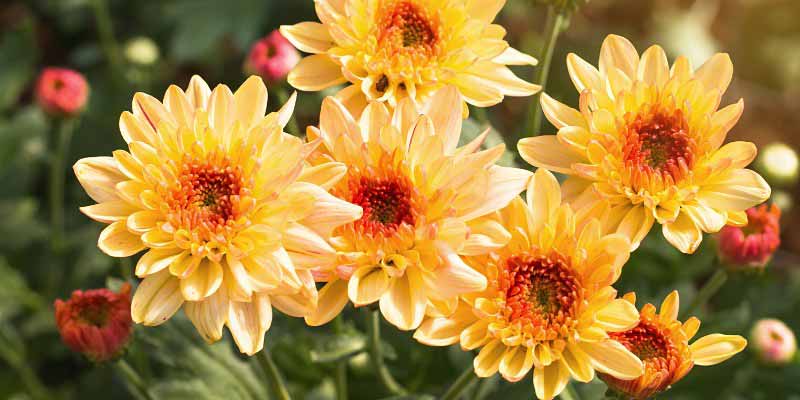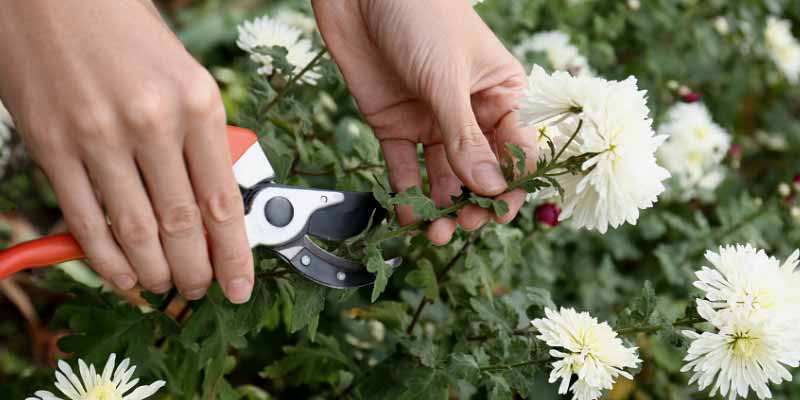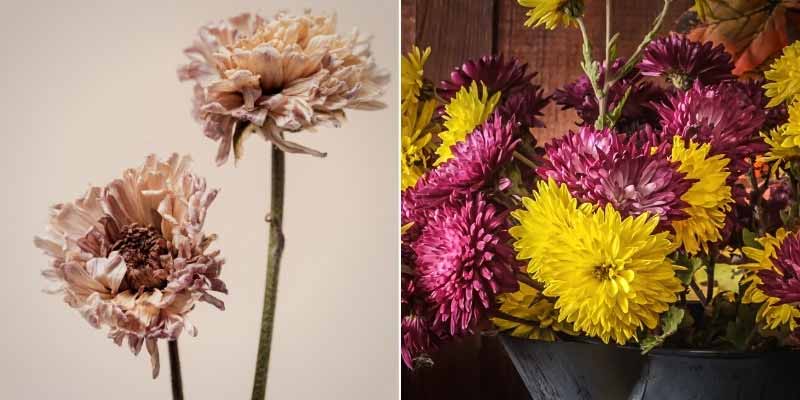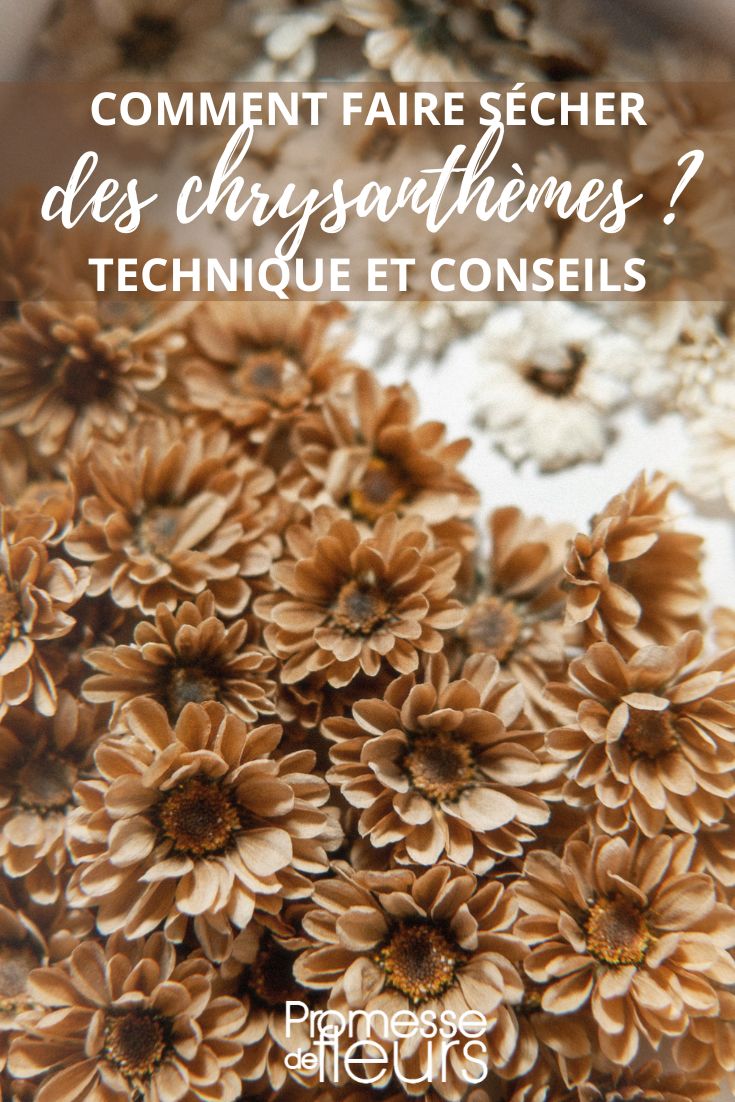Far from the symbolism of cemetery plants, Chrysanthemums, whether they are pompom varieties for All Saints' Day or simple daisies, brighten up the garden and balcony right up to the entrance of winter. Their flowers radiate and illuminate the garden at a time of year when other plants fade away. With their warm or soft colours, they stand out in autumn bouquets. This is why one might be tempted to extend the beauty of these "autumn roses" by drying them. We present to you 3 easy methods to dry them and preserve them for as long as possible!
Which varieties of chrysanthemums to choose for dried flowers ?
Some varieties of chrysanthemums are better suited for drying than others. It is important to choose chrysanthemums that retain their bright colours and shape once dried. Among the most suitable varieties for drying are the pompom chrysanthemums or garden chrysanthemums (Chrysanthemum indicum), known for their small globular flower heads that withstand dehydration well. They offer numerous daisy-shaped flowers in vibrant, compact, and often very double shades. The hybrid autumn daisies (Chrysanthemum x rubellum) are also well-suited for drying.

When and how to cut chrysanthemums for drying ?
The first chrysanthemums bloom as early as June, while the later ones may still flower in November, even into December. Harvest them using pruning shears, just before they fully bloom, after the morning dew has dissipated or at the end of a sunny, dry day. Always choose the most beautiful flowers and, if necessary, remove any damaged parts. Remove the leaves to limit evapotranspiration and facilitate preservation.

How to dry chrysanthemums?
There are several drying methods to create dry bouquets of chrysanthemums, including air drying, glycerine, or using silica gel.
Air drying
Drying your chrysanthemums in the air is the simplest, most economical, and most natural technique.
- Start by removing the leaves from the stems
- Bind your chrysanthemums into small bunches of 6 to 8 stems using raffia or string
- Hang them upside down on clotheslines in a warm, dry, dark place (to avoid colour alteration from light exposure) that is well-ventilated, such as an attic
- Space the bunches sufficiently to allow good air circulation
- Count about two to three weeks: the flowers are completely dry when they snap between your fingers
Drying in a vase
It is also possible to dry your chrysanthemums simply by placing them in a vase, with or without glycerine. This liquid helps prevent the stems and flowers from becoming too brittle while keeping them relatively flexible. Again, expect between two and four weeks for the flowers to dry.
To dry your chrysanthemums in a vase without glycerine :
- Place your cut flowers in the vase without water
- Then place it in a dark, dry, and well-ventilated room
- Wait patiently until they dry naturally
To dry your chrysanthemums in a vase with glycerine:
- Mix 1/3 glycerine with 2/3 hot water
- Once the mixture has cooled, pour it into the vase
- Place your bouquet
- The glycerine will gradually replace the sap in the stems
Drying with silica gel
Silica gel is a moisture absorber that comes in the form of crystals or small beads. Quite expensive, it does not allow for drying large quantities of flowers, as you would need too much of it. This technique perfectly preserves the colours of your chrysanthemums as well as their shape, and it works well for flowers with very dense and tight heads.
- Fill a sufficiently large airtight box with the gel to accommodate your chrysanthemums with their stems
- Gently bury your flowers using a tablespoon
- Close the lid
- Wait between 2 and 3 days until your flowers are perfectly dry
- Wearing gloves, carefully retrieve your flowers by holding them by their stems

How to properly store dried chrysanthemums?
To preserve your dried chrysanthemums for as long as possible, keep them in a dry place away from direct light. Avoid exposing them to full sunlight if you wish to maintain their beautiful colours for a long time. To dust them off, gently use a hairdryer on a cool setting, holding it about 20 cm away from the flowers, or use a feather duster. If necessary, to protect them from dust and moisture, you can spray a coat of hairspray once a year. Well-preserved, dried chrysanthemums can last for several years.
Display them in a vase or in bowls, alone or in combination with other dried flowers. They can also be used in flower crowns and Christmas decorations. Once dried naturally (without silica and without glycerine), you can also infuse them to make chrysanthemum tea.
































Comments